This 12-part blog series will share the vision, architectural challenges, and construction effort involved in building a new house, one that defies conventional home design by integrating the environment in a rigorous, unprecedented and beneficial way.
By Deborah, D., Homeowner, Cold Brook Farm | March 10, 2021
When Jason and I planned our purchase of the 43-acre property in Oldwick, NJ, neither of us had ever lived on a piece of land larger than ½ acre. We realized that owning a property of this size meant that we had a responsibility. There were many components to consider and understand: the Farm, the Forest Management Plan, the Conservation Easement with the New Jersey Conservation Foundation. We had to learn the requirements of the Highlands Preservation Area and the Highlands Planning Area, since we were going to be building a house. We had to become familiar with what a “riparian zone” was and how those areas of our property should not be developed, not that we wanted to develop them anyway. We wanted to do right by the land.
During the numerous conversations we had about what we wanted from this next chapter of our lives, when it came to our role as landowners, we had very specific things in mind. We wanted to be good stewards. We knew our role would be a temporary one; the land would remain long after we were gone and we wanted to protect it and improve its health—enhance its biodiversity, revitalize its soil, and remove the invasive plants and plant native ones.
But we also planned to build a house.
We were keenly aware that the piece of land we were buying had never had a house on it. We were taking an undeveloped piece of land and would be forever changing it. We wanted to make the smallest footprint possible and then surround our home with living things to negate that footprint and heal the farm from years of industrial farming practices. This would be a delicate balancing act, as we were joining a community that dated back to the 1700s (and further still, taking into account known Native American campsites on the property). We wanted to both respect what was established before we arrived, while we also looked ahead to what this place could become. It was far more than wanting to be considerate of long-established, local architectural traditions for our house, we also wanted to create an extremely environmentally friendly, “Net-Zero” home that would generate all of the electric power we would need to live our lives onsite and surround it with a vibrant, organic, permaculture ecosystem. We understood that this was a community of people who had lived and worked together, farmed alongside each other for ages and we wanted to respect the impact of our coming in and wanting to make a change.
Organic farming and soil regeneration
We tried our best to convince the farmer who had long farmed the land to do so without the herbicides, synthetic fertilizers, fungicides, pesticides and genetically modified organism (GMO) plant material that are typical mainstays of industrial agriculture, but he felt it wouldn’t be economically viable for him to do so. Our decision to part ways was made after multiple conversations and even an afternoon meeting, over beers at the Tewksbury Inn. Jason and I were sorry to see him go.
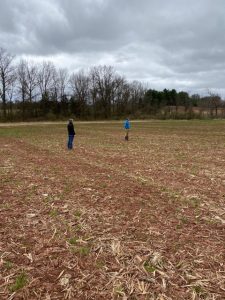
Jay Vogelaar and Jason D. in April 2020, figuring out the first cover crop to restore soil.
Through word of mouth and many phone calls, we were lucky to find two young men who were excited to farm our land organically. We told them what we wanted to do, and though we knew very little about farming practices, we did a tremendous amount of research and had developed a strong sense of what would be best for the soil and land. We asked for input from our CSA (“Community Supported Agriculture”) farmer, whom we had known for 14 years. We asked other farmers in the area. We consulted with Terra Genesis International, a firm that focuses on regenerative agriculture and helps people understand the best and most sustainable use of the land they live on. They did a detailed assessment of our property, including the soil type, the geologic history of the land, the prevailing winds, the overall climate and typical weather patterns. Based on this background, we also worked with a local Permaculture expert to create a specific landscape plan for Cold Brook that would improve the land not only for us, but would create a healthy habitat for insects, birds and other creatures. We also attended the NOFA-NJ (Northeast Organic Farmers Association) conference on February 1st, 2020, held annually at Rutgers University, to learn more about what the possibilities were going forward. All of them agreed that the soil needed to be resuscitated. It was dead. There were precious few living microorganisms in it. Since the farm had been planted with rotating commodity crops for decades and routinely sprayed with glyphosate (the generic name for “Roundup”), a potent herbicide, we had to provide our soil with compost and nitrogen and give it time to heal. In order for a farm to be considered organic, it needs to be free of all synthetic pesticides, herbicides, and fertilizers for three years.
Jay and Case Vogelaar were recommended to us and were willing and enthusiastic partners in our farming venture. Case has since moved on to find work elsewhere, no longer in the farming industry, but his brother Jay, proprietor of Diamond J Farms—a new venture from the family’s River Bend Farm—is now fully ensconced in working with us to plan future crop rotations aimed at both cash crops and soil regeneration. Before the NOFA-NJ conference, we spoke with a trio of men who co-founded an organization called River Valley Community Grains. They have been working with farmers in Hunterdon and Warren counties in New Jersey, bringing heirloom, organic grains back to this area of New Jersey, which during colonial times was called the “Bread Basket of the United States” because of all the grain crops grown here.
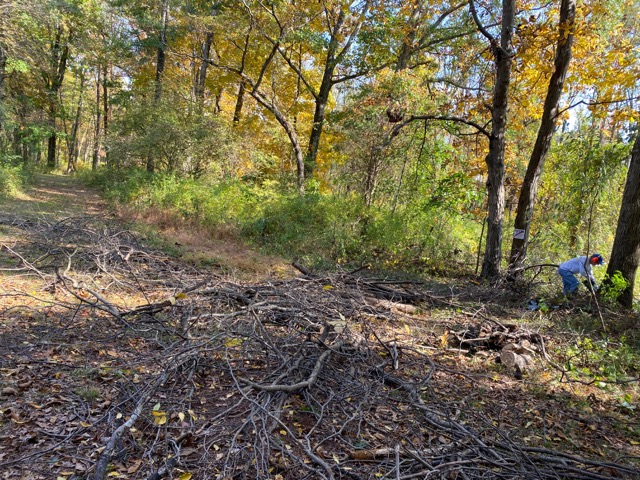
Jason D. working on Cold Brook Farm.
Forestry management
On October 24, 2019, we walked the property with Heather Gracie, the Forester who had created Cold Brook Farm’s Forestry Management Plan. We were excited to meet with her and hear about the myriad of ways we could improve the woodland habitat. Our meeting took a couple of hours and there was an overwhelming amount of information to absorb and projects to tackle. Dozens of the Eastern Red Cedars had been downed in a microburst during Hurricane Sandy in 2012. Many of those trees were marked with blue paint as part of the forestry management plan in place from our land’s prior owners, indicating that they needed to be removed. This meant other trees would need to be planted in their place. We noticed on our walk around the property that Asian Bittersweet had taken over many of the trees along the hedgerow and was slowly strangling them. Some of the vines had diameters as large as tree trunks. Other trees were in need of pruning and general maintenance. There was a hilly section within our woods that contained a long-used equestrian path where the soil erosion had become a significant issue. Who would do all of this work? Could we do it? How would we have time to do ALL that had to be done? How much would it cost to do all of the work? There was so much we could do to improve this beautiful piece of land.
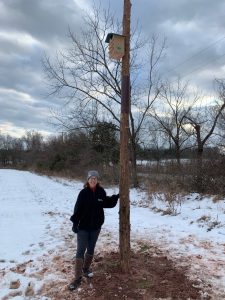
Deb D. by an American Kestrel box at Cold Brook Farm.
In the end, we hired several people to do some of the work that was needed, and we also managed to do a fair amount of the work ourselves. Jason became handy with a chainsaw and we have harvested enough of those downed cedar trees to use as the fence posts for the deer fence that will surround our homestead area. We also have used two of the posts for Kestrel Boxes, in the hopes of increasing their local population. (More on that in a future blog, perhaps.) Many of the Asian Bittersweet vines have been cut to allow the trees being strangled to survive, and hopefully, thrive again. And finally, we hired two companies to do a lot of tree work. The first was Charlie Garrett, of Garrett Concerns, who tragically died of COVID, this past fall. Charlie and his crew also harvested a number of the cedar trees for us and helped us to rework the equestrian trail in the backwoods with some of the wood chips from the downed trees in a way that should significantly reduce erosion. And Steve Morris, of Mammoth Tree Service, who does work for Gracie & Harrigan, our forester, did a phenomenal job caring for many of the trees in our hedgerow and beyond.
The Tewksbury Land Trust
In February 2020, when we were continuing to learn about farming practices and attending the Northeast Organic Farming Association (NOFA) conference on the 1st Saturday, two weeks later, on February 15th, we discovered more about the Tewksbury Land Trust and their mission in this part of New Jersey. We enjoyed a delightful lunch with Larry and Amelia Ross. Larry is the President of the Tewksbury Land Trust. He and his wife had graciously invited us following a phone conversation that Jason and Larry had in which Jason expressed our interest in helping to support the Tewksbury Land Trust’s mission. Larry also wanted to hear more about our plans for Cold Brook Farm. When we arrived at their farm, Larry, who grew up in the area and lived here most of his life, whisked us away in his car to take us on a tour of the surrounding area, including Mountainville and Pottersville, showing us some of his favorite natural and architectural landmarks. While eating a delicious lunch, we spoke of the area’s beautiful natural surroundings, the desire to protect and enjoy the land around us, and things like travel and food and wine, too. After lunch, we took a walk in the woods that abuts both their property and a Raritan Headwaters nature preserve. They showed us their bee boxes, their chicken coop and vegetable garden. Jason and I were imagining the things we would do at CBF while taking in all the sights on their farm. The following day, we were invited to join them for a walk with many of the supporters of the TLT. They had recently acquired a new piece of land for preservation (the Lance Property) and Larry was proud to show it off to people in the area who support their wonderful effort to preserve the land.
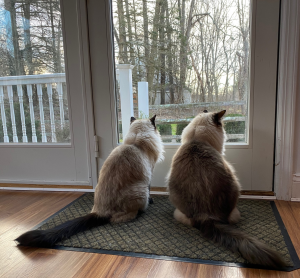
Alfredo and Bartholomew
Since we closed on our purchase in October 2019, we have met many remarkable people who value land preservation, organic and regenerative farming, the Locavore movement, habitat restoration and watershed preservation, and buying and sourcing local. We didn’t realize that when we signed those closing documents, we were not only purchasing a beautiful piece of land, but were also joining a community of caring, considerate people–people who are respectful of and responsible toward the area they call home and beyond, possibly being a beacon to those who may be looking to do the same.
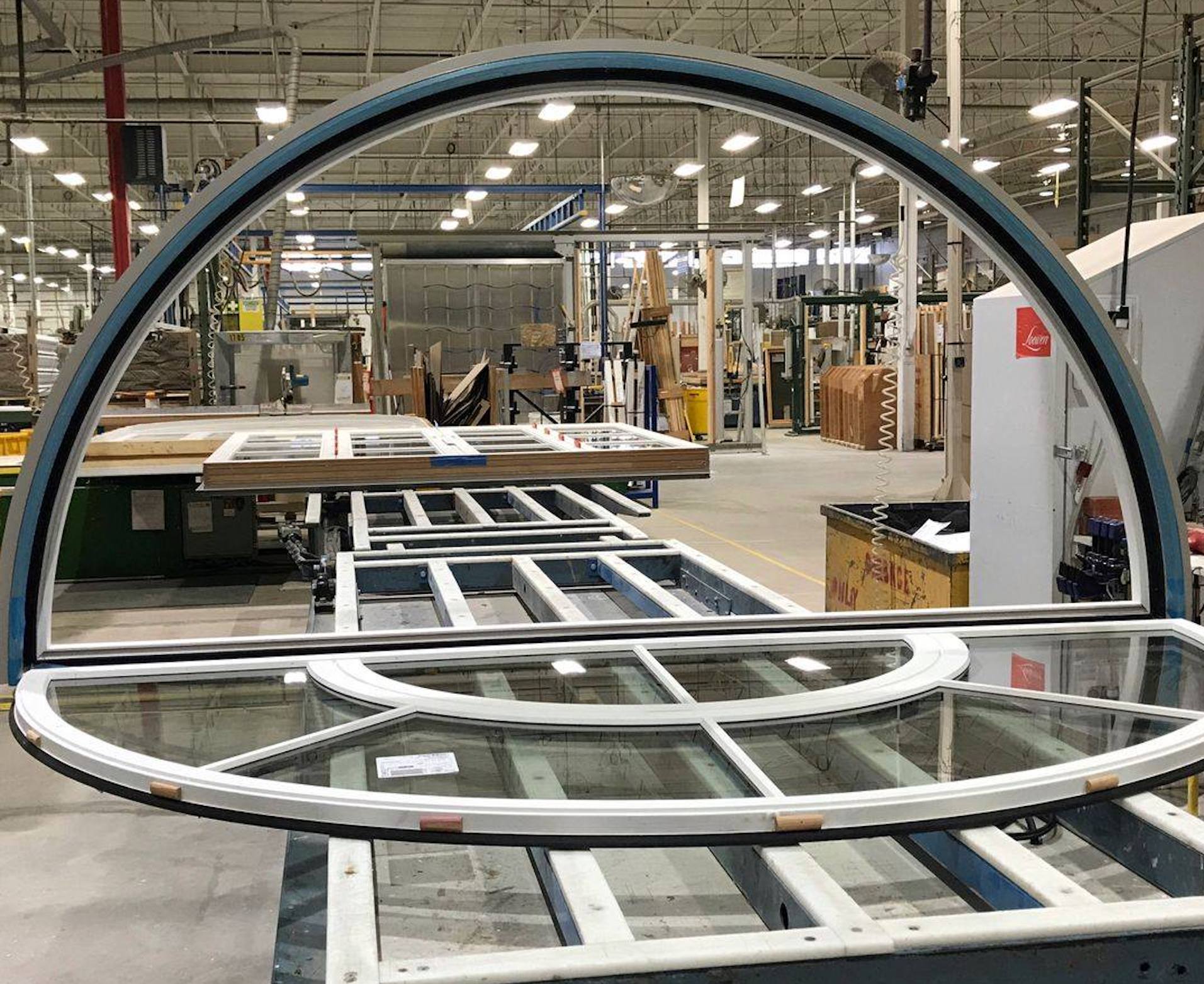





2 Comments
What a fantastic job you guys are doing on my favorite farm that I took care of for ten years and I’m so glad that you took my advice and kept the Cold Brook Farm name…Great Job and thank you
Beautiful blog!